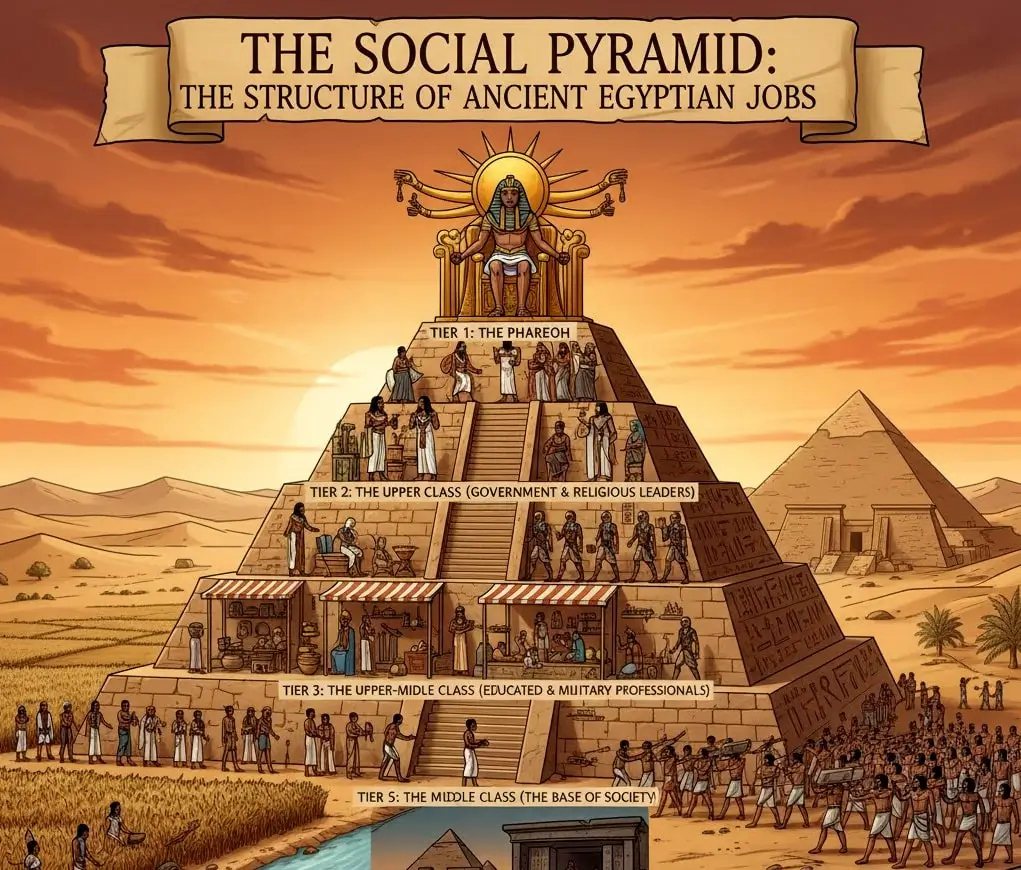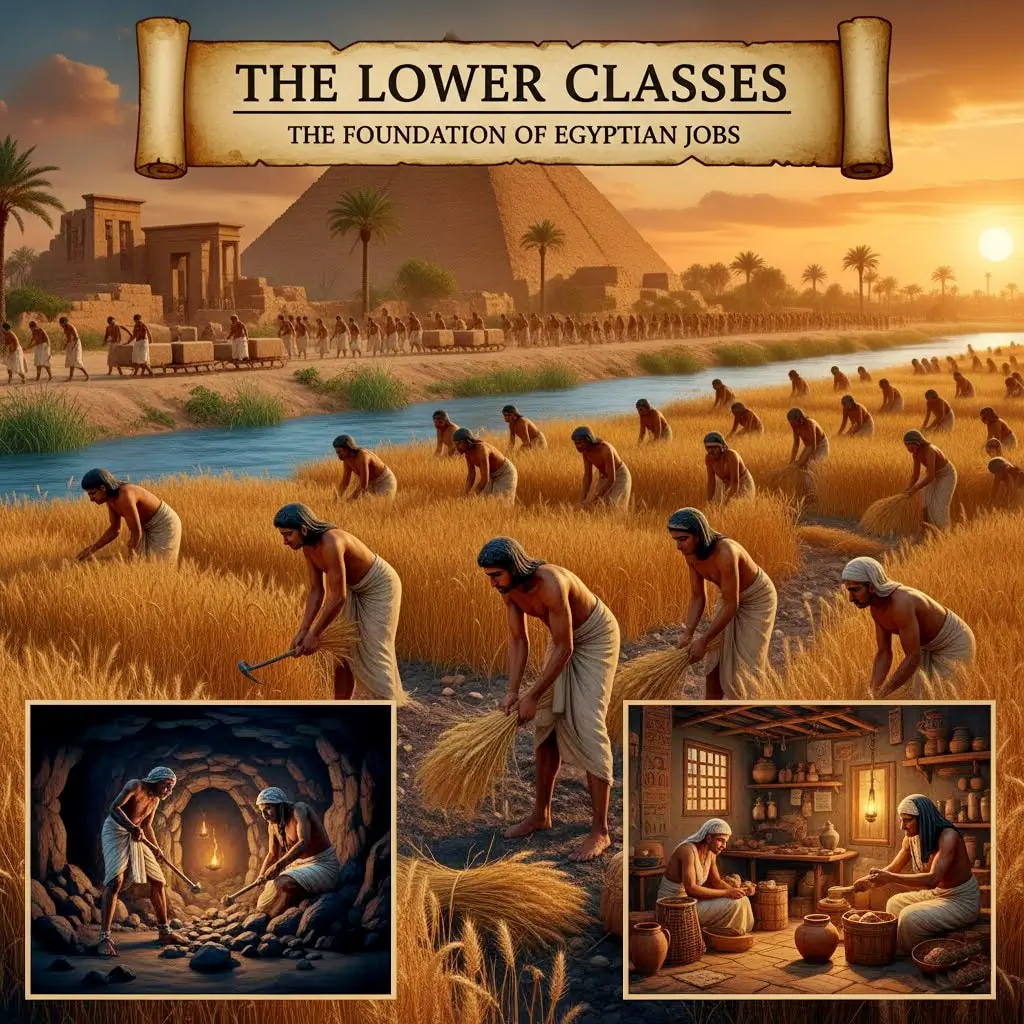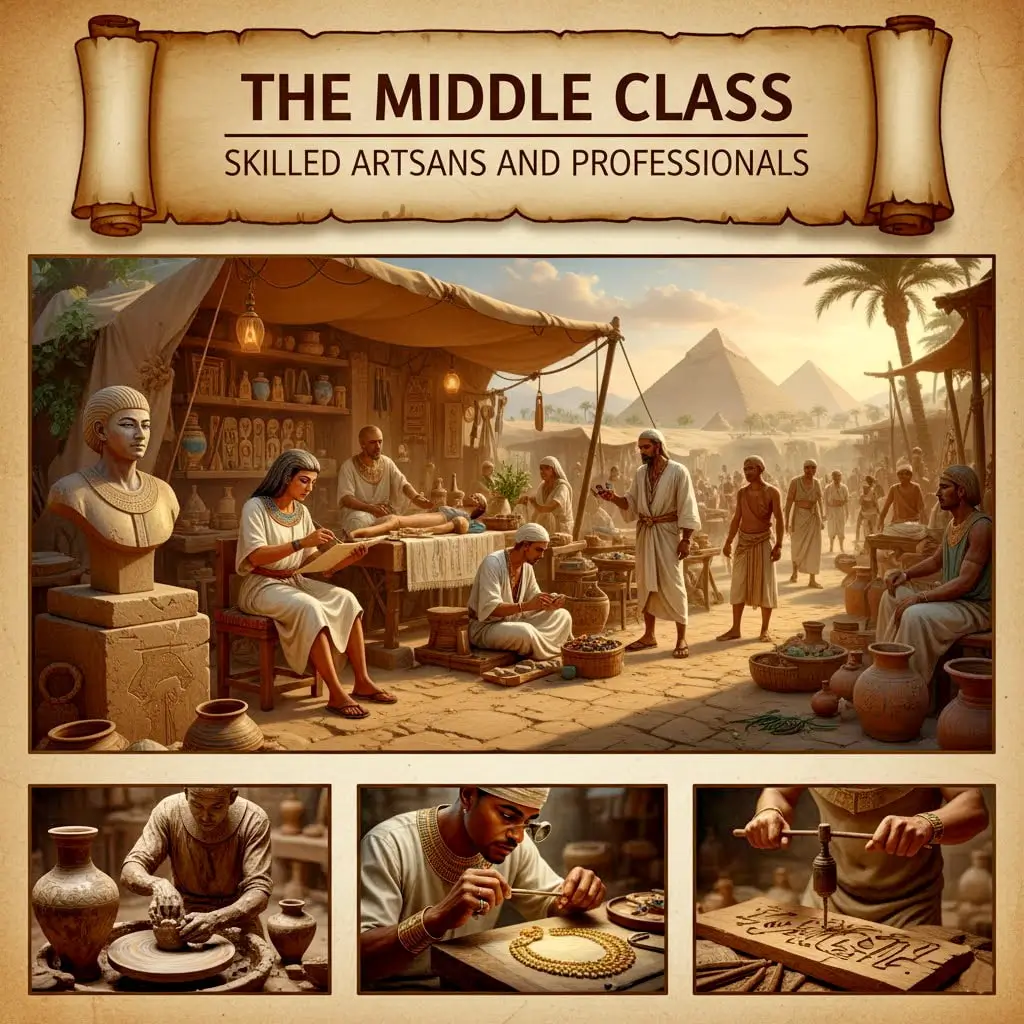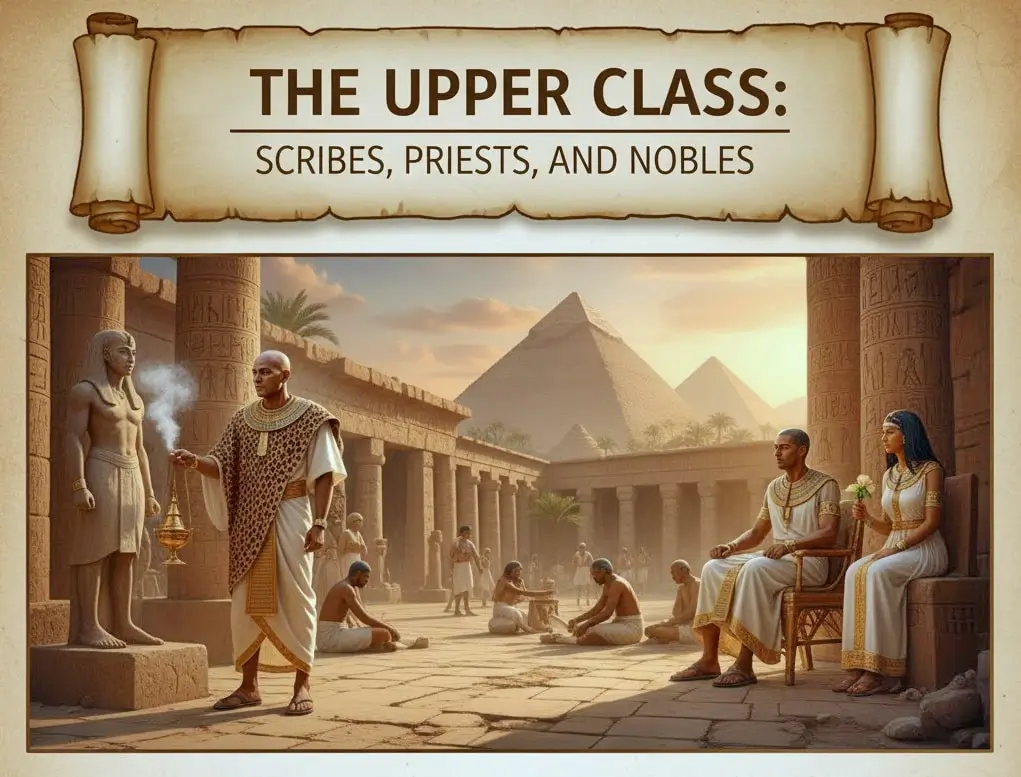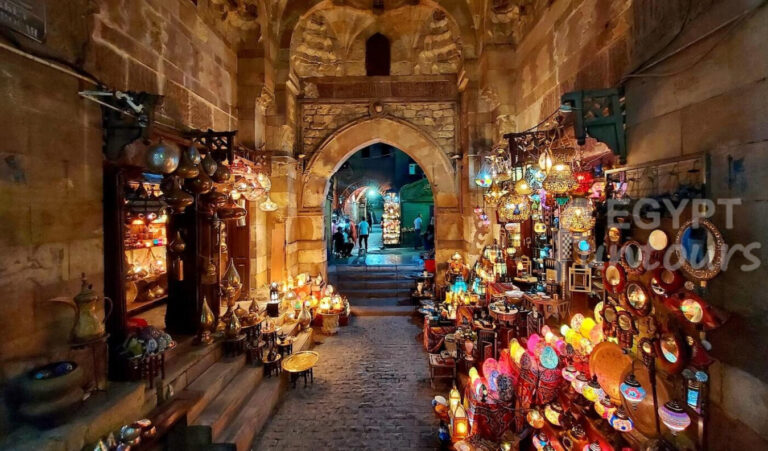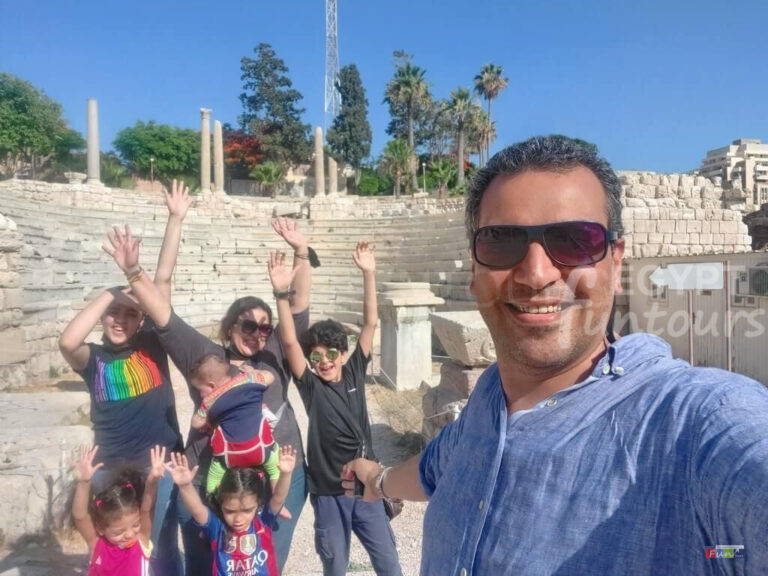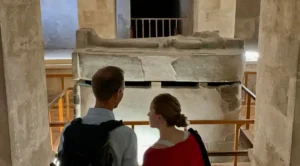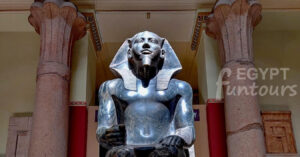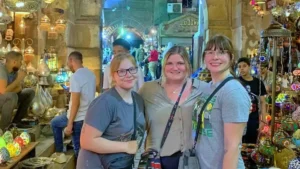Throughout ancient Egypt’s long history, which dates back over 3,000 years, a vast and complex array of ancient Egyptian jobs and occupations emerged. As the civilization developed, so did the variety of professions, reflecting the evolution of Egypt’s political, religious, and social structures.
One of the first things we notice from this time is the importance of a person’s “title.” As soon as writing was invented, people began mentioning their jobs in their tombs, on stone tablets (stelae), and on temple walls. These titles were more than just a job description; they were a source of immense pride, a mark of a person’s formal role in the state, and a record of their contributions to society.
For the ancient Egyptians, a person’s title was a vital part of their identity, one that would ensure their status and resurrection in the afterlife. This article explores the most significant ancient Egyptian jobs, from the humble farmers who fed the nation to the powerful priests, scribes, and officials who ran the state.


